Abstract
Coronatine is a toxin produced by Pseudomonas syringae pv. glycinea which induces the same chlorotic response in bean leaves as does infection by the bacterial pathogen. Although the structure of coronatine is known, the biological mode of action is not. One possible clue to its activity is the ethyl-substituted cyclopropane side chain of the molecule. This part structure (1-amino-2-ethycyclopropane-1-carboxylic acid or AEC) is an analog of the ethylene precursor 1-aminocyclopropane-1-carboxylic acid (ACC).
When coronatine was applied to bean leaf discs in solution, or to intact leaves through prick application, a substantial stimulation of ethylene production was measured. This stimulation was concomitant with an increase in ACC content of the tissue, and occurred under the same conditions as did the chlorotic response to the toxin. The stimulation of ethylene production was inhibited by aminoethoxyvinylglycine, an inhibitor of ACC synthesis. These results, along with those of experiments using l-[U-14C]methionine, indicated that the stimulation involved de novo production of ethylene via the methionine pathway.
The whole, unhydrolyzed coronatine molecule is probably necessary to elicit both the ethylene and chlorosis responses since neither hydrolysis product (coronafacic acid and coronamic acid AEC]) is effective alone. A naturally occurring analog of coronatine, coronafacoylvaline, also stimulated ethylene production and caused chlorosis. However, the unrelated pseudomonad phytotoxin phaseolotoxin, which also causes chlorosis, did not stimulate ethylene production. Ethylene thus may have a specific role in the coronatine toxic syndrome.
Full text
PDF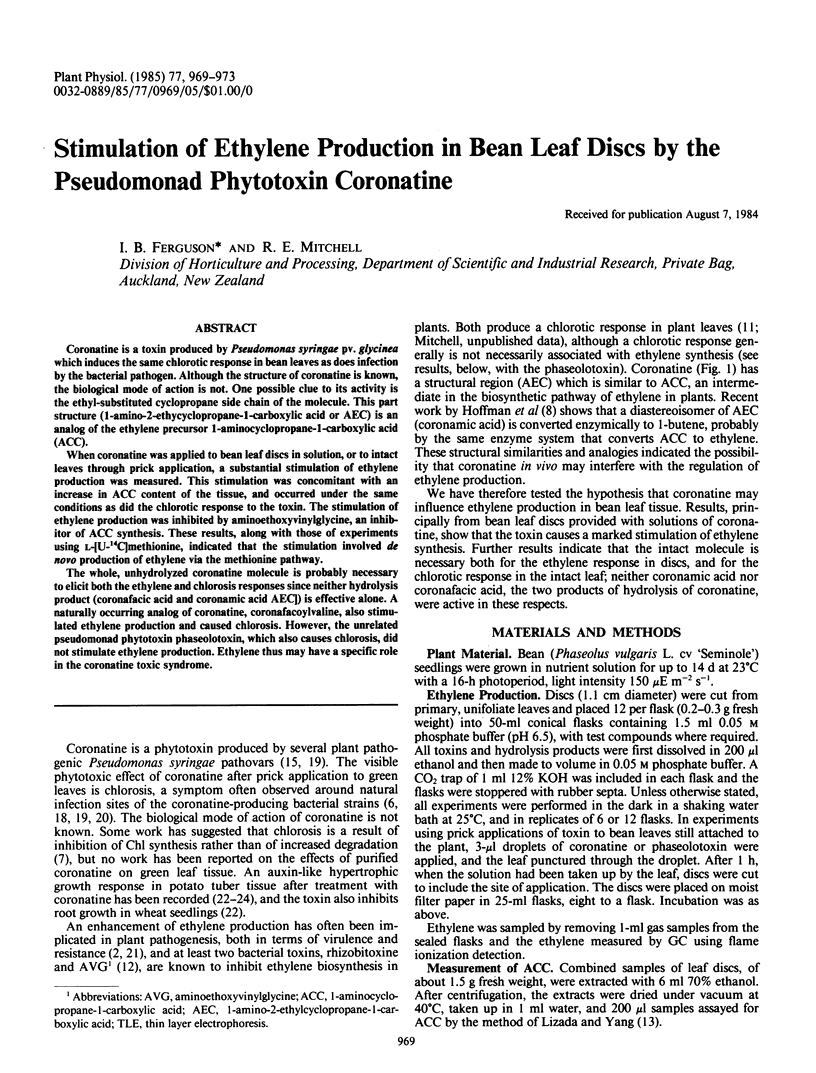
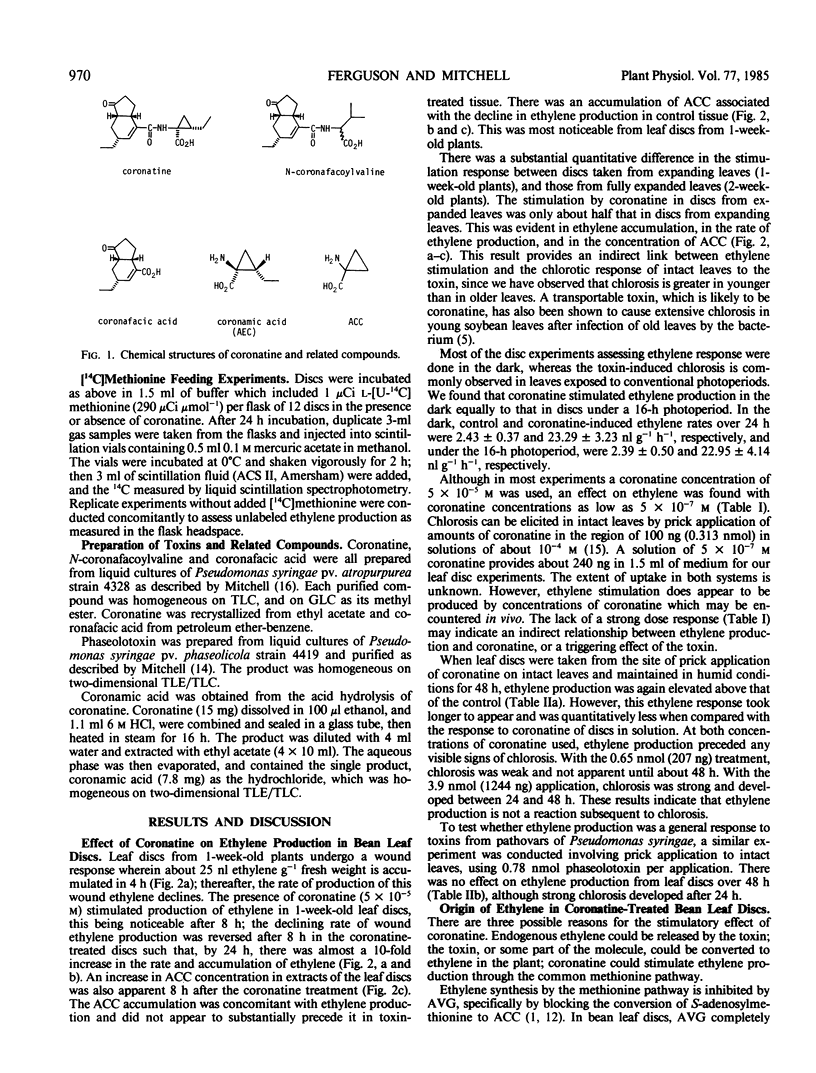
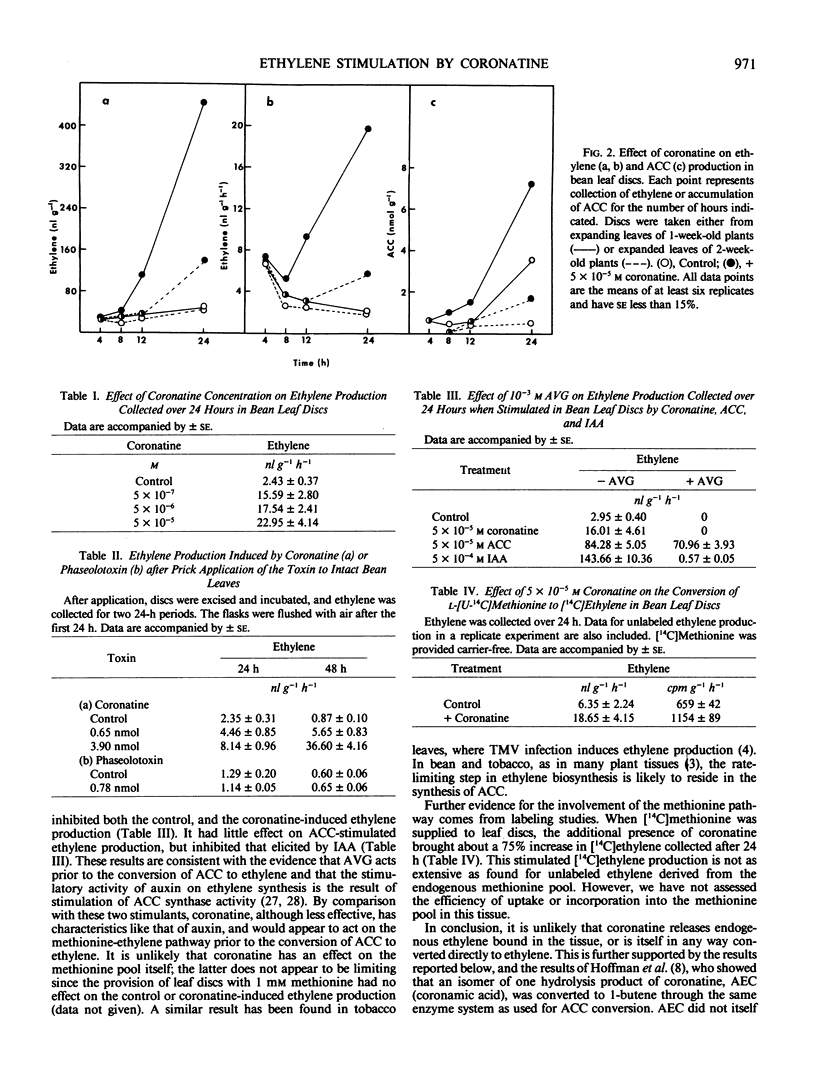
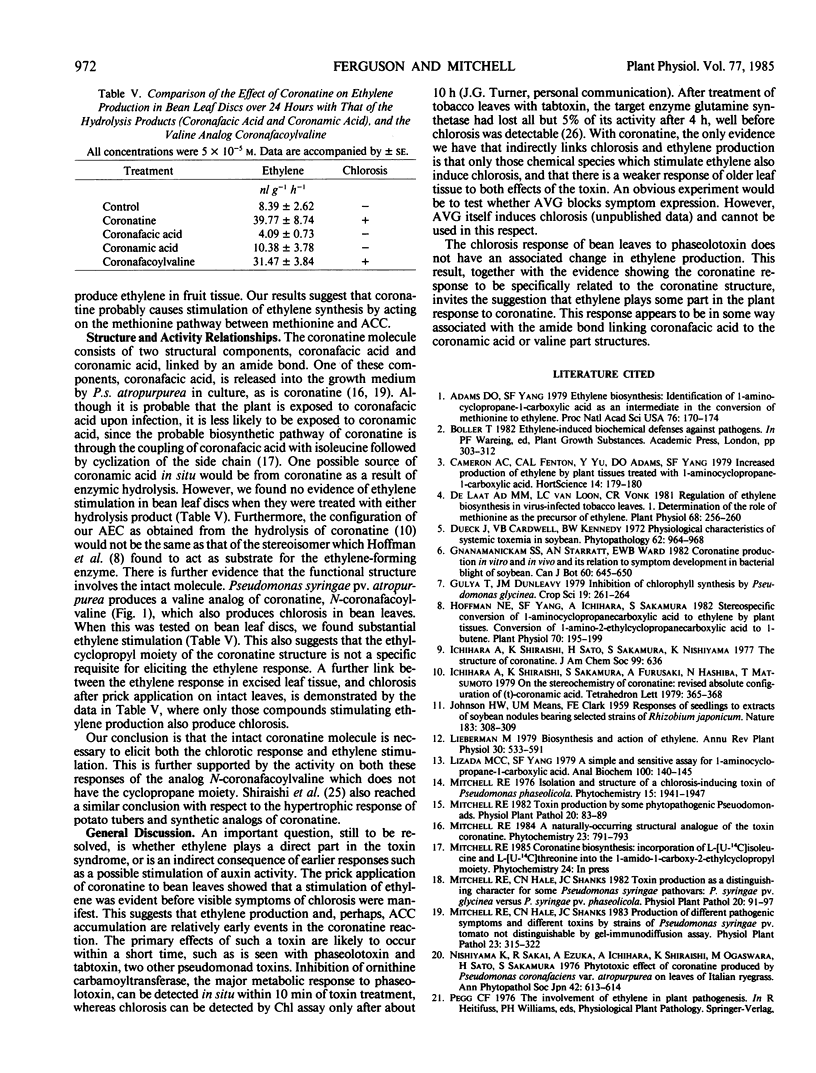
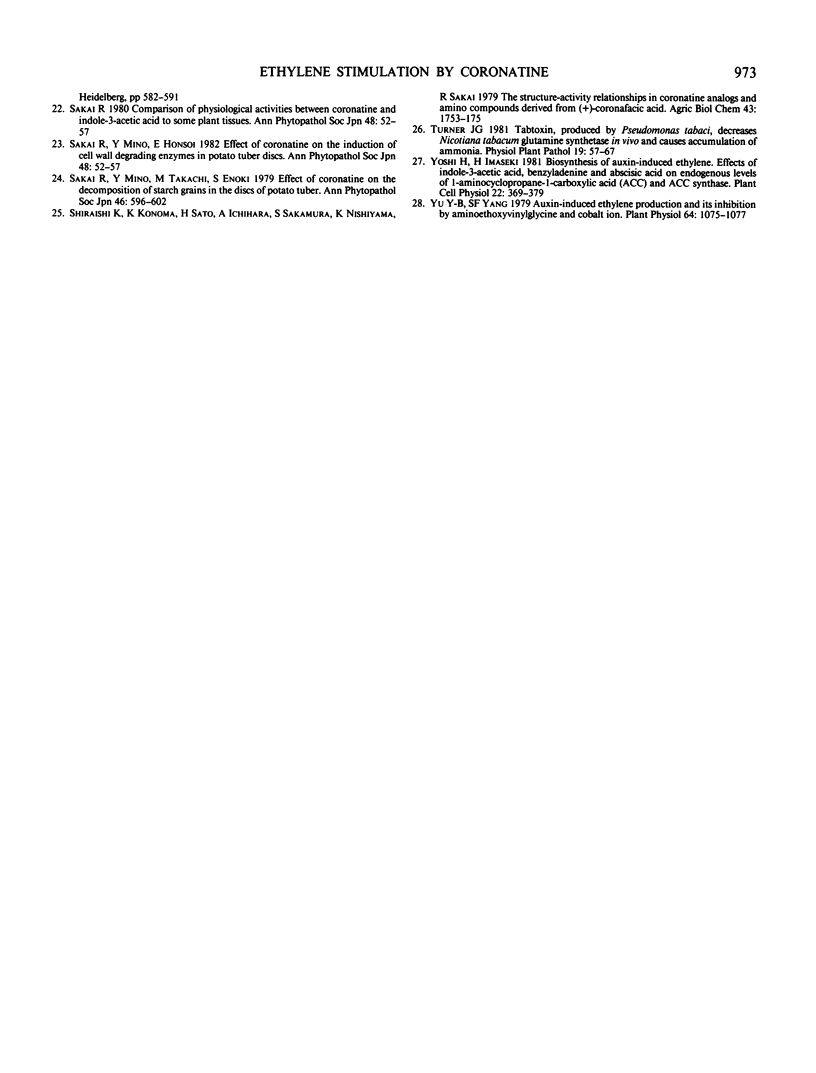
Selected References
These references are in PubMed. This may not be the complete list of references from this article.
- Adams D. O., Yang S. F. Ethylene biosynthesis: Identification of 1-aminocyclopropane-1-carboxylic acid as an intermediate in the conversion of methionine to ethylene. Proc Natl Acad Sci U S A. 1979 Jan;76(1):170–174. doi: 10.1073/pnas.76.1.170. [DOI] [PMC free article] [PubMed] [Google Scholar]
- Hoffman N. E., Yang S. F., Ichihara A., Sakamura S. Stereospecific conversion of 1-aminocyclopropanecarboxylic Acid to ethylene by plant tissues : conversion of stereoisomers of 1-amino-2-ethylcyclopropanecarboxylic Acid to 1-butene. Plant Physiol. 1982 Jul;70(1):195–199. doi: 10.1104/pp.70.1.195. [DOI] [PMC free article] [PubMed] [Google Scholar]
- Lizada M. C., Yang S. F. A simple and sensitive assay for 1-aminocyclopropane-1-carboxylic acid. Anal Biochem. 1979 Nov 15;100(1):140–145. doi: 10.1016/0003-2697(79)90123-4. [DOI] [PubMed] [Google Scholar]
- Yu Y. B., Yang S. F. Auxin-induced Ethylene Production and Its Inhibition by Aminoethyoxyvinylglycine and Cobalt Ion. Plant Physiol. 1979 Dec;64(6):1074–1077. doi: 10.1104/pp.64.6.1074. [DOI] [PMC free article] [PubMed] [Google Scholar]
- de Laat A. M., van Loon L. C. Regulation of Ethylene Biosynthesis in Virus-Infected Tobacco Leaves : I. DETERMINATION OF THE ROLE OF METHIONINE AS THE PRECURSOR OF ETHYLENE. Plant Physiol. 1981 Jul;68(1):256–260. doi: 10.1104/pp.68.1.256. [DOI] [PMC free article] [PubMed] [Google Scholar]


